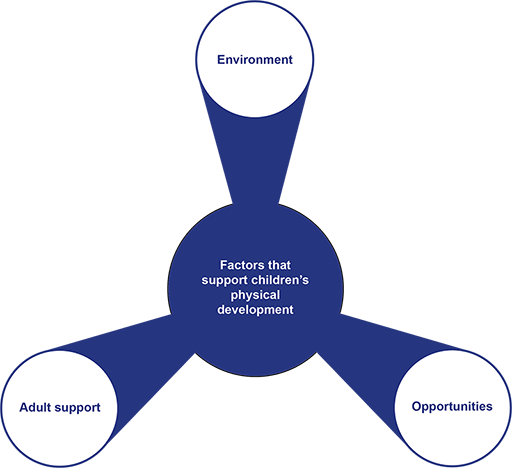2.3 Supporting children’s physical development
You are now going to explore some factors that are known to support children’s physical development.
A supportive environment
A supportive environment for children to practise their physical skills is important. It should be safe for children to explore independently, make mistakes and determine personal risks, challenges and adventures. They need to be able to move easily between activities and to change position by themselves, so avoid too much clutter or furniture if possible.
Opportunities
A wide range of opportunities to be physically active every day should be provided for all children. It’s good to have a range of familiar and moveable resources to play with either alone or with others – indoors or outside. Quiet, calm and protected areas should be available for rest and recovery when needed. You really don’t need special clothes or equipment, but always try to offer accessible and manageable possibilities for movement, adequate space and plenty of time for them to practise their skills throughout the day.
Positive adult support
Positive adult support plays a really important role in children’s physical development. If you enjoy moving and being active – it is highly likely that your children will also. Offering the appropriate level of support varies from child to child, but it is vital to appreciate that adults are responsible for providing a range of opportunities that work for each stage of physical development.

